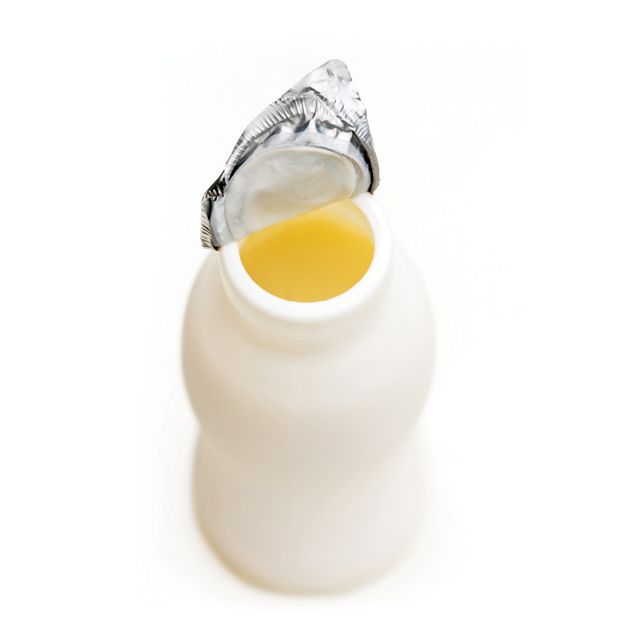Crackdown on Probiotic Health Claims Costs Billions for EU Yogurt Industry
New data from Euromonitor International suggests the European yogurt market has been crushed by restrictions on probiotic health claims.
Photo © iStockphoto.com/Anna_Quaglia

It’s no secret that the European Food Safety Authority (EFSA; Parma, Italy) has taken an unfavorable stance toward probiotic health claims in the last eight years, but soon-to-be published data from Euromonitor International is shedding new light on how much EFSA’s stance has actually cost the EU yogurt market.
Among just six of the EU member countries-Austria, Belgium, France, Germany, the Netherlands, and the United Kingdom-the probiotic health claims ban will cost as much as €1.5 billion (approximately $1.7 billion) in lost sales for drinking probiotic yogurts between 2012 and 2020, according to Ewa Hudson, head of health and wellness, Euromonitor International. Hudson shared Euromonitor’s latest findings at the recent Probiotics Workshop at SupplySide West, as part of her presentation, “Changing World of Probiotics-Global Market Snapshot.”
Hudson said that between 2002 and 2007, probiotic yogurt was the “driving force of overall yogurt in Europe” and grew much faster than non-probiotic yogurt. However, as EFSA began to crack down on probiotic health claims and eventually banned use of the term “probiotic” in the EU, the market soon began to decline.
“Regulations started to change around 2008, 2009, 2012, and that was the time when we saw the final scope of the legislation and the disappointment,” said Hudson. “You can see the market responded pretty much straight away. Both probiotic yogurt and non-probiotic yogurt started to decline-from one extreme to the other.”
The EU probiotic market saw more than 18% annual growth in 2002-2003, but by 2012-2013, the worst year on record, it was declining by nearly 8%, according to Euromonitor’s research across 20 EU member state markets. While the decline has slowed since 2013, the probiotic yogurt market is still far from growth.
“Looking forward, we expect that the probiotic yogurt will continue to decline [in Europe],” said Hudson. “There is no growth on the horizon. The non-probiotic yogurt will see growth again toward the end of the forecast period, around 2020, because of the trend toward protein especially.”
Hudson adds, “We can already see that definitely, health claims do matter.”
Other Functional Ingredients Take the Wheel
Hudson also spoke to the way many brands have had to reposition their European products now that EFSA has cracked down on use of the term “probiotic” on labels and descriptions of probiotic health benefits. Many brands continued to list “live cultures” on the label or include the name of the probiotic strain, but other functional ingredients with approved health claims soon became a more prominent marketing feature of these probiotic yogurts, Hudson said.
“For yogurts that were, for example, previously positioned for immunity, such as Actimel, the decision was probably quite fast actually to reformulate the product with the ingredient that contained claims or can be linked to specific health claims,” said Hudson.
While these yogurts may still contain probiotic strains, the focus has instead shifted to other ingredients for which claims are allowed. Probiotics may now just be an “additional benefit” for informed consumers, says Hudson.
For instance, Danone’s Activia yogurt brand has been able to reassert its digestive health positioning by incorporating wheat bran fiber into its Activia Fibre yogurt, which launched earlier this year, said Hudson. Although the new yogurt still includes probiotic strain Bifidobacterium lactis, it’s thanks to the inclusion of fiber that it can now feature the claim of “contributing to an acceleration of intestinal transit.”
A Different Picture Around the World
Although the European probiotic yogurt market is still in decline, the picture couldn’t be more different in Asia. Hudson said growth in the global probiotic yogurt market is now driven by countries like China, which Euromonitor says added $1.4 billion in new sales between 2012 and 2014. Even more growth is expected in China this year, according to Hudson, as well as Vietnam, Japan, and many other Asian countries.
In the United States, the probiotic yogurt market has declined while other yogurts, such as Greek yogurt or high-protein yogurt, have attracted more attention. But there is substantial growth in the U.S. market for probiotic supplements, which is the driving force behind global probiotic supplements.
Worldwide, probiotic supplements grew by 7.8% this year, making them “the fastest growing supplements this year globally,” said Hudson. Euromonitor also pegged Italy, Canada, Taiwan, and Japan as key growth markets for probiotic supplements.
The global probiotics market currently stands at approximately $35 billion, with Euromonitor anticipating it to reach $48 billion by 2020.
Read more:
Protein Content Takes Center Stage in New Dairy, Yogurt Launches
Michael Crane
Associate Editor
Nutritional Outlook Magazine
michael.crane@ubm.com

Prinova acquires Aplinova to further increase its footprint in Latin America
April 7th 2025Prinova has recently announced the acquisition of Brazilian ingredients distributor Aplinova, which is a provider of specialty ingredients for a range of market segments that include food, beverage, supplements, and personal care.

.png&w=3840&q=75)

.png&w=3840&q=75)



.png&w=3840&q=75)



.png&w=3840&q=75)





















